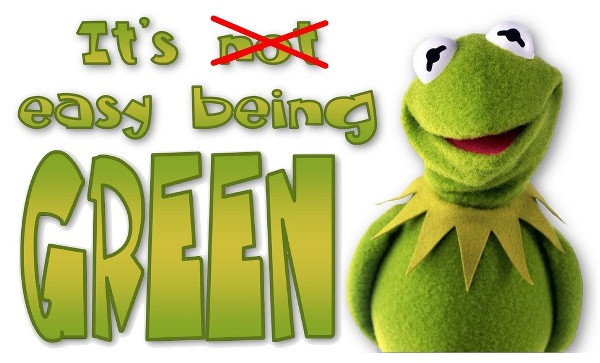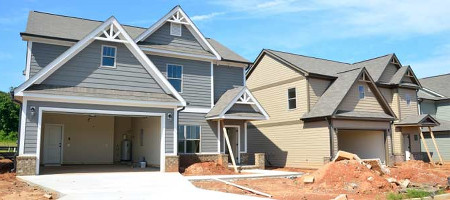“BuilderBooks” recently released “What Green Means to Home Buyers: Perceptions and Preferences”, a new study of home buyer’s choices focusing exclusively on green-performance innovations in the new home building industry. The study explores buyers’ attitudes towards various green building features, ideas or concepts, and the possibility that the home buying decision may be affected by any of these features.
It concludes that there is a notable growth in green and sustainable homes over the last several years. The results of this study further solidify the continued buyer interest in green building. They also points to increased building of efficient homes and home remodeling work in the future.
The 5 key outcomes regarding top influencers in a home purchase decision include:
#1. Safe Community – 90% of all respondents
#2. Energy Efficiency – 88% of all respondents
#3. Low maintenance – 85% of all respondents
#4. Lower operating costs – 85% of all respondents
#5. Durable/Resilient – 84% of all respondents
Common Words New Home Buyers Use to Describe Green Homes Are:
32%: Efficient, Water Efficient, Energy Efficient, High Efficiency
15%: Eco-friendly, Environmentally-friendly, Environmentally-safe, Environmentally-conscious
8%: Solar, Solar Energy, Solar Power, Solar Panels
4%: Lower Utility Bills, Lower Costs, Saves Money
One fascinating conclusion of the new study is that the largest stimulus for green homes comes, not from millennials, as a lot of people may suspect, but from buyers age 55 and older.
So, what is a green building?
Green building, also known as sustainable building, or green construction, is best defined as a set of principles in home construction, which reduce the environmental impact the home has throughout construction and during the life span of the home.
It usually commences with the design of the home and it’s position on the lot. It resumes with the use of construction materials that reduce waste, have a small environmental impact, and are manufactured from recycled material and renewable recourses. It ends with highly efficient mechanical systems and energy efficient appliances and lighting.
It also includes planning operation, maintenance, renovation, and demolition.
What’s the Problem – Why Green Building?
The home environment is a crucial part of our lives. Our homes provide us with spaces to live, work, play, and learn.
Nonetheless, the design, construction, maintenance and operation of our home environment have an enormous impact on the natural environment and resource base. Conventional building methods frequently ignore the relationships between home construction and the environment.
A conventional 2300 sq.ft. wood-framed home devours over one acre of forest, and the building industry is responsible for nearly one-half of Canada’s demand for wood.
Energy use in heating, cooling and providing electricity to houses adds notably to air pollution and accounts for more than one-third of Canada’s energy consumption.
The conventional wood-framed house creates an average of three to seven tons of waste created during construction.
Buildings and houses account for 40% of our use of raw materials like copper, steel and plastics.
“Green Building” as a Solution.
It is essential to understand that there is no general formula for building a green home. What can be deemed as “green” depends on many different factors like climate, vegetation, availability of local materials, relative costs and a host of additional details.
There is a constant debate regarding which building methods are in fact “greener”. Is it more ecologically safe to use a recycled synthetic carpet, which is recycled from waste but will eventually find it’s way into a landfill, or to use wood floors, that can be expected to last much longer and come from a renewable resource, but demand cutting down trees? The solution is not always clear.
Although methods may vary, there is a general understanding regarding the goals of building green homes.
The goals of green building are to improve the energy efficiency, of buildings, cut down on the waste of raw materials, use land, soil and water resources moderately and efficiently and lessen the construction waste. All of these factors combine to decrease the ecological footprint that our living spaces create.
While the methods of green building and design may vary, five primary principles persist:
1. You Should Optimize Your Site’s Potential
Use a design and construction process that minimize site disturbance, preserve, restore or regenerates native habitat, green space and associated ecosystems that are vital to sustaining life.
You should evaluate each building lot regarding the home location and orientation to optimize the implementation of solar energy, natural daylight, and natural breezes and ventilation.
You should Identify and protect valuable greenfield and wetland sites from development.
You should optimize the use of on-site stormwater treatment and ground water recharge.
You should minimize the edges of the construction area, avoid excessive compaction of existing topsoil, and provide effective sedimentation and silt control during all phases of site development and construction.
Use landscape design to preserve and restore the region’s natural habitat and heritage while emphasizing the use of indigenous, hardy, drought-resistant trees, shrubs, plants and turf.
Help reduce night-time light pollution by avoiding over-illumination of the site and use low cut-off exterior lighting fixtures which direct light downward, not upward and outward.
2. You Should Optimize For Energy Efficiency:
Choosing home heating and conditioning equipment with the lowest initial cost, may prove to be a poor long-term choice, when energy costs over the lifetime of the system are taken into the equation.
Homes can incorporate many green features, but if they do not use energy efficiently, it is challenging to show that they are actually green.
Fortunately, there are numerous ways to improve a building’s energy efficiency, from insulating walls to installing automatic shutoff switches for lights.
3. You Should Protect and Conserve Water
In many parts of the world, fresh water is becoming an increasingly limited resource. In the western world, sales of bottled water are at the record high as is the use of potable water for showering, dishwashing and grass watering.
Frequently toxic chemicals like fluoride are used to make water drinkable. The financial and environmental costs of the sewage treatment plant are significant.
The effort to bring drinkable water to our household faucets consumes enormous energy resources in pumping, transport, and treatment.
A green home should use water efficiently, and reuse or recycle water for on-site use, when feasible.
4. Optimize Building Space and Material Use
While the world population continues to grow (to over 9 billion by 2050), natural resource use will continue to increase, and the demand for additional goods and services will continue to stress available resources.
It is critical to achieving an integrated and intelligent use of materials that maximizes their value, prevents upstream pollution, and conserves resources.
A sustainable building is designed and operated to use and reuse materials in the most productive and sustainable way across its entire life cycle and is adaptable for reuse during its life cycle. The materials used in a sustainable building minimize life-cycle environmental impacts such as global warming, resource depletion, and human toxicity.
Environmentally preferable materials have a reduced effect on human health and the environment and contribute to improved worker safety and health, reduced liabilities, reduced disposal costs, and achievement of environmental goals.
5. You Should Optimize Indoor Environmental Quality
The indoor environmental quality of a home has a notable impact on occupant health, comfort, and productivity. Between other attributes, a sustainable building maximizes lighting, has appropriate ventilation and moisture control, optimizes acoustic performance, and avoids the use of materials with high-VOC emissions.
A green home is one that’s healthy, more comfortable, efficient, durable and low maintenance, all the things that most people expect from the quality building. A green home provides you with all these benefits in a way that’s also easier on the environment.
























